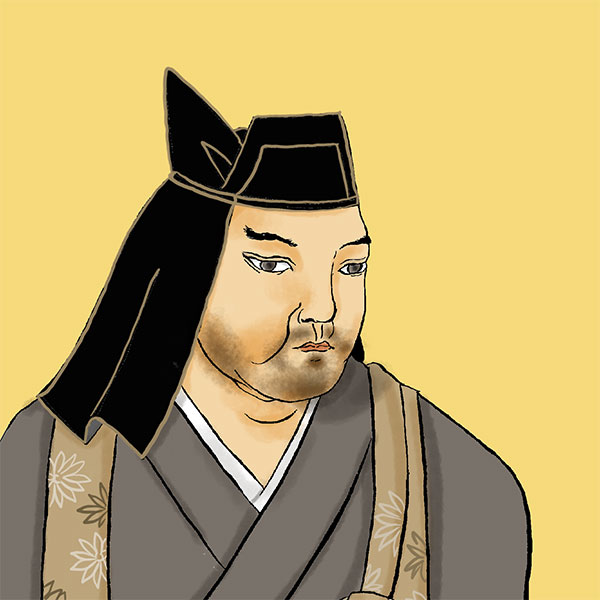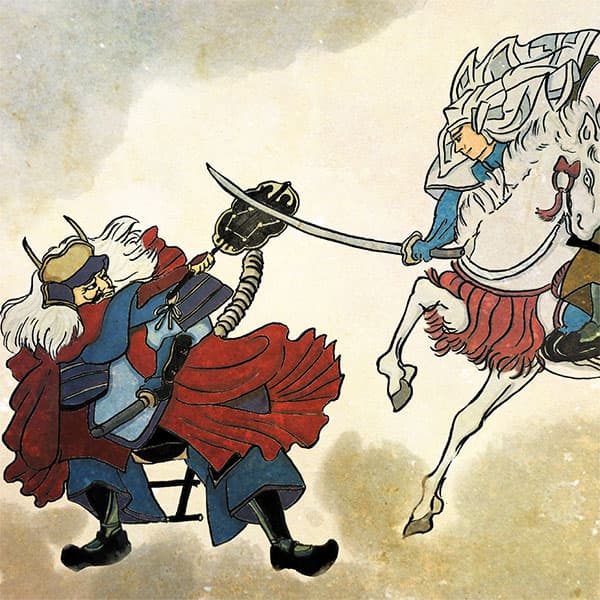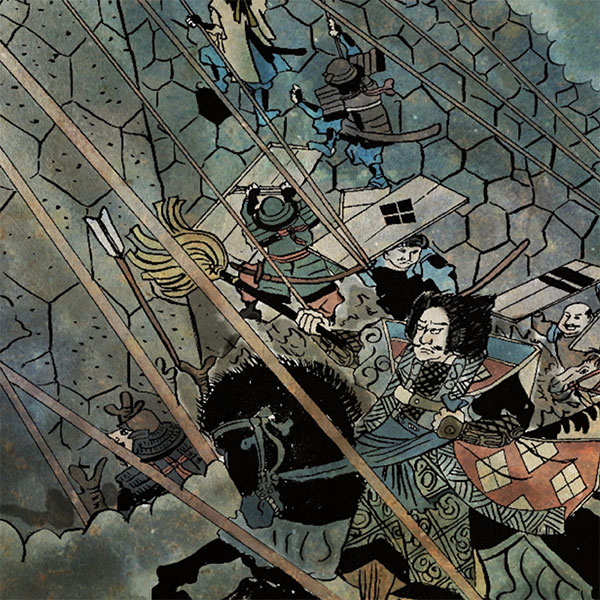Kenshin Uesugi (2/2)A warrior known as the god of war

Kenshin Uesugi
- Article category
- biography
- name
- Uesugi Kenshin (1530-1578)
- place of birth
- Niigata Prefecture
- Related castles

Yonezawa Castle

Takada Castle
- related incident
In March of the same year, the Ikko Ikki of Etchu China and Yasutane Shiina communicated with Takeda Shingen, and they fought against the Ikko Ikki to subdue Etchūgoku, but the battle was not settled (Battle of Hojotsu), and in July, the Takeda army They threatened Echigo Province by attacking Iiyama Castle in the northernmost part of Shinano and capturing its branch castles, but the Uesugi garrison repulsed them. Furthermore, in order to kill Yasutane, who had defected from Terutora, he entered Etsukoku and attacked Moriyama Castle, including the stronghold of Matsukura Castle.
In 1569, through the mediation of Moriji Ashina and Terumune Date, he had Shigenaga Honjo offer his eldest son Akinaga Honjo as a hostage, allowing Shigenaga to return. Furthermore, due to the surrender of Yoshimasa Daihoji, who was allied with Shigenaga, he gained possession of the Dewa-Shonai region.
After that, they continued to fight against the Hojo clan and Oda Nobunaga, including the Battle of Tedorigawa. On December 18, 1577, Kenshin returned to Kasugayama Castle. On December 23, he issued a mass mobilization order for the next expedition, and the expedition was scheduled to begin in March 1578.
However, on March 9, while preparing for the expedition, he collapsed in a stable in Kasugayama Castle, fell into a coma, and died at 2:00 p.m. on March 13 without regaining consciousness. He passed away at the age of 49. It is said that the remains were dressed in armor and equipped with a long sword, placed in a jar, and sealed with lacquer. Even after the Uesugi family moved to Yonezawa, this vase remained enshrined in a corner of Yonezawa Castle's main enclosure, and after the Meiji Restoration, it was moved to the mausoleum where successive feudal lords were buried.
Because he was single all his life and had not yet decided which of his adopted sons, Kagekatsu and Kagetora, would be his successor, the Otate Rebellion broke out over succession. The victorious Uesugi Kagekatsu succeeded Kenshin as the head of the Uesugi clan and became the first lord of the Yonezawa domain, but the power of the Uesugi family declined greatly due to the bloody civil war.
There are various theories about Kenshin's failed expedition, including that he was trying to go to Kyoto and overthrow Oda Nobunaga, and that he was trying to invade the Kanto region again, but the truth is still in the dark.
Karasawayama Castle (Tochimoto Castle)
A mountain castle with curved walls arranged around the main enclosure at the summit of Mt. Karasawa (247m). The Sengoku period is famous for the battle of Karasawayama Castle fought by Sano Masatsuna, the 15th head of the Sano clan. The castle was so strong that it was attacked ten times by Kenshin Uesugi, but was repeatedly repulsed and caused trouble for Kenshin.
The Sano clan was caught between two major factions, the Hojo clan in Sagami and the Uesugi clan in Echigo, and was struggling to decide which side to take. Sano Masatsuna, who initially teamed up with Uesugi Kenshin in Echigo, had his castle besieged by Hojo Ujimasa with a large army of 35,000 in 1559, but Kenshin immediately sent reinforcements and forced the Hojo army to retreat. I'm letting you do it.
Karasawayama Castle (Sano) seems to have been particularly important to Kenshin, as it was the eastern edge of his sphere of influence in the Kanto region, and was the boundary between the sphere of influence of the Satake clan and other pro-Uesugi generals in the northern Kanto region.
Masatsuna's son, Munetsuna, had a disagreement with his younger brother Toramatsumaru, who was adopted by the Uesugi clan, and the ``Karasawayama Tensho Rebellion'' broke out between the clans. As a result, Mr. Sano has parted ways with Mr. Uesugi.
It is said that in 1576, Uesugi Kenshin, who joined forces with Toramatsumaru, attacked the castle with 15,000 soldiers, but forced Ichiuesugi's army to retreat. Until then, the castle had been attacked by the Uesugi army nine times, and although the castle lord, Masatsuna, had surrendered many times, there are records that he caused Kenshin a lot of trouble.
Currently, it is part of the Tochigi Prefectural Natural Park, and the main enclosure is home to Karasawayama Shrine, which enshrines Fujiwara Hidesato, who is said to have built the castle.The remains include stone walls, large squares, earthworks, horikiri, earthen bridges, and wells that were restored in the early modern period. etc. remain.
Kasugayama Castle
The castle was originally built by the Uesugi clan, the shugo of Echigo Province, during the period of the Northern and Southern Courts to serve as a castle for their mansion in Echigo Fuchu. In 1507, Tamekage Nagao, who was the shugo, supported Sadazane Uesugi and expelled the shugo Uesugi Fusano, and when Sadazane entered Fuchu as the new shugo, the Nagao clan became the lords of Kasugayama Castle. I did.
Built on the summit of Mt. Kasuga, it is said to be an impregnable castle with natural strongholds, and was the residence of four generations: Tamekage, Harukage, Uesugi Kenshin (Nagao Kagetora), and Uesugi Kagekatsu.
However, the Hori clan, who ruled Echigo after Uesugi Kagekatsu moved to Aizu, found it inconvenient to manage politics, so in 1607 he built Fukushima Castle near Naoetsu Port and moved there, ending the role of Kasugayama Castle. I did.
The name ``Kasugayama'' comes from Kasuga Shrine, where spirits were sent from Kasuga Taisha Shrine in Nara.
It is also said that the somon gate of the nearby Rinsen-ji temple was relocated from Kasugayama Castle's Kitemon gate.
The first restored model based on rigorous historical research was completed and was exhibited at the Echigo Joetsu Tenchijin Expo held from January to December 2009.
Uesugi family mausoleum
This is the graveyard of the successive lords of the Yonezawa clan in Yonezawa City, Yamagata Prefecture. On January 11, 1984, it was designated as a national historic site under the name of the Uesugi family graveyard, the lord of the Yonezawa domain.
Originally, Kenshin died on Mt. Kasuga in Echigo, but his successor, Kagekatsu Uesugi, later became a vassal of Toyotomi Hideyoshi, who unified Japan, and was appointed one of the five elders. When he moved to Aizu, Kenshin's coffin was also built in Echigo. It was then moved to Aizu and enshrined in a temporary hall.
The current mausoleum has Kenshin Mausoleum in the center, with the mausoleums (graves) of successive feudal lords standing solemnly on either side. From the 2nd generation Kagekatsu to the 8th generation Shigetsada, burials were done by cremation, and the hall was a gabled structure, but from the 9th generation Harunori to the 12th generation Shigetsada, burials were done in the ground, and the hall was also built in a treasure-shaped structure.
Kenshin Festival
This is a festival held in Joetsu.
It has been held every year by the people of Joetsu, from the early Showa period, during and after the war, without interruption. The first Kenshin Festival was held at Kasugayama Shrine on September 13, 1926, sponsored by the youth organizations of Takada City, Naoetsu City, and Kasuga Village (all of which are now Joetsu City).
In addition, there is a local legend that even during the turbulent times when feudal lords of the Sengoku period ruled, Kenshin invited the people to Kasugayama Castle once a year and rewarded them for their daily labor. It is said that this was the reason for holding a public festival.
It is a festival of relaxation for the citizens, and many people gather every year. The reenactment and parade of the Battle of Kawanakajima are a feast for the eyes of visitors.
Reread the article on Kenshin Uesugi
- related incident

- WriterTomoyo Hazuki(Writer)I have loved history and geography since my student days, and have enjoyed visiting historical sites, temples and shrines, and researching ancient documents. He is especially strong in medieval Japanese history and European history in world history, and has read a wide range of things, including primary sources and historical entertainment novels. There are so many favorite military commanders and castles that I can't name them, but I especially like Hisashi Matsunaga and Mitsuhide Akechi, and when it comes to castles, I like Hikone Castle and Fushimi Castle. Once you start talking about the lives of warlords and the history of castles, there's a side of you that can't stop talking about them.






